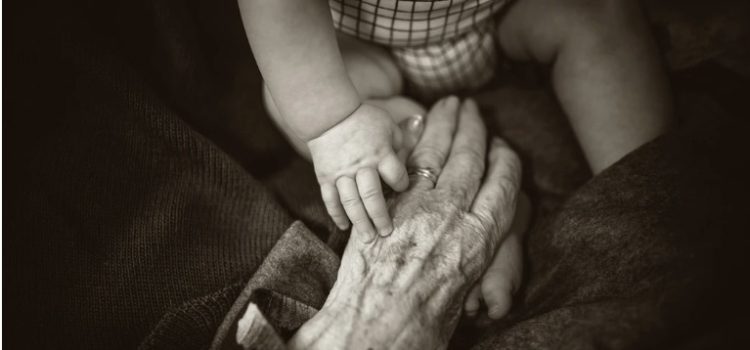

This article is an excerpt from the Shortform book guide to "Being Mortal" by Atul Gawande. Shortform has the world's best summaries and analyses of books you should be reading.
Like this article? Sign up for a free trial here.
Why is multigenerational living in decline? What are the advantages of living in a multigenerational family?
It was once typical for the elderly to live with their children and grandchildren under one roof. This arrangement wasn’t always easy, but it met many of the core needs of the elderly that we neglect today. Moreover, living in a multigenerational household made younger generations more aware of mortality by exposing them to the realities of aging and dying.
Here’s why multigenerational living is in decline, according to Atul Gawande.
We Don’t Live With the Elderly in Multigenerational Households
One defining feature of the way we experience aging today concerns the typical household: We no longer live in a multigenerational setting. Research shows that the percentage of elderly people living with their children dropped from 60% in the early 20th century to less than 15% in 1960.
| Updated Statistics on Multigenerational Living in the US and Elsewhere Gawande mainly addresses a US audience in Being Mortal, so these statistics may not be relevant for other regions. In this commentary section, we’ll address US statistics and briefly note multigenerational trends in other regions. While it’s generally true in the US that fewer elderly people live with their adult children than in the early 20th century, data paints a more nuanced picture of how this situation has changed over the years. For instance, recent research shows that the number of older Americans living in multigenerational households has actually been increasing since the 1980s when it reached its lowest point (12%). As of 2015, 20.3% of non-institutionalized older adults live in multigenerational households, and the trend seems to be on the rise. Moreover, multigenerational households are more than twice as common for people of color and foreign-born individuals than for non-Hispanic whites and those born in the United States. The situation is similar in European countries such as Spain and Greece, where 20% of older adults lived with their children in 2019. By contrast, in Latin America and the Middle East, for instance, the percentage of elderly people living with at least one child is often higher than 90%. |
In his book Being Mortal, Gawande offers two reasons why we don’t live together anymore:
First, we don’t honor the elderly. This is largely because people live longer than ever before—reaching old age isn’t that special now. Life expectancy has gradually risen in the developed world since the early 20th century because of advances in medical technology, safer workplaces, and more stable food sources. When life expectancy was short, the rare person who survived into old age would have been honored.
| Attitudes Toward the Elderly Correlate to Life Expectancy Recent studies show a correlation between negative attitudes toward the aging population and the size of that population, as Gawande implies. In general, the more elderly people there are, the more negatively they’re perceived. In Japan, for example, where the elderly make up more than 36% of the population, 87% of the population feels that aging is a major problem for the country. By contrast, in Egypt, those numbers are 12% and 23%, respectively. These figures are related to the life expectancy of each country—Japan’s ranks among the highest in the world (85.03 years), while Egypt’s (72.54 years) ranks below the 2021 global average of 72.81 years. Both countries, however, boast a far higher life expectancy than the 1900 global average (estimated to be 32.0 years), showing just how significant improvements in global health have been since the early 20th century. |
Second, younger and older generations don’t depend on one another for economic security. One reason for this is that job opportunities are more varied than in the past: A child is no longer obliged to take over the family trade. Also, economic safety nets such as Social Security and Medicare in the US provide financial support for the elderly. Because of this, it’s easy for individual family members to forge independent lives for themselves, including living separately.
(Shortform note: This point implies that multigenerational households (or at least dependent living arrangements) should become more common when economic security weakens. Recent research bears this out: During the height of the Covid-19 pandemic, more individuals moved in with family members because they felt it would alleviate economic hardship caused by job losses. This indicates that economic factors influence the decision to live with elderly family members, as Gawande suggests.)
According to Gawande, we’ve failed to make up for the lost benefits of living with aging parents and grandparents: The elderly still need physical care and a sense of purpose, and we need to see aging and dying as a natural part of life.
(Shortform note: For many seniors, multigenerational households aren’t a possibility, either because they never had children or because they outlived them. These elders usually have no alternative to institutional or professional care. This is becoming more common: Recent research shows that more people are reaching old age without children than ever before. These adults are more likely to live alone, which can often lead to loneliness, social isolation, and poor health habits.)

———End of Preview———
Like what you just read? Read the rest of the world's best book summary and analysis of Atul Gawande's "Being Mortal" at Shortform.
Here's what you'll find in our full Being Mortal summary:
- What it's like to age and die in the 21st century
- Why we need to be better at accepting death
- How to improve the well-being of the aging and dying






